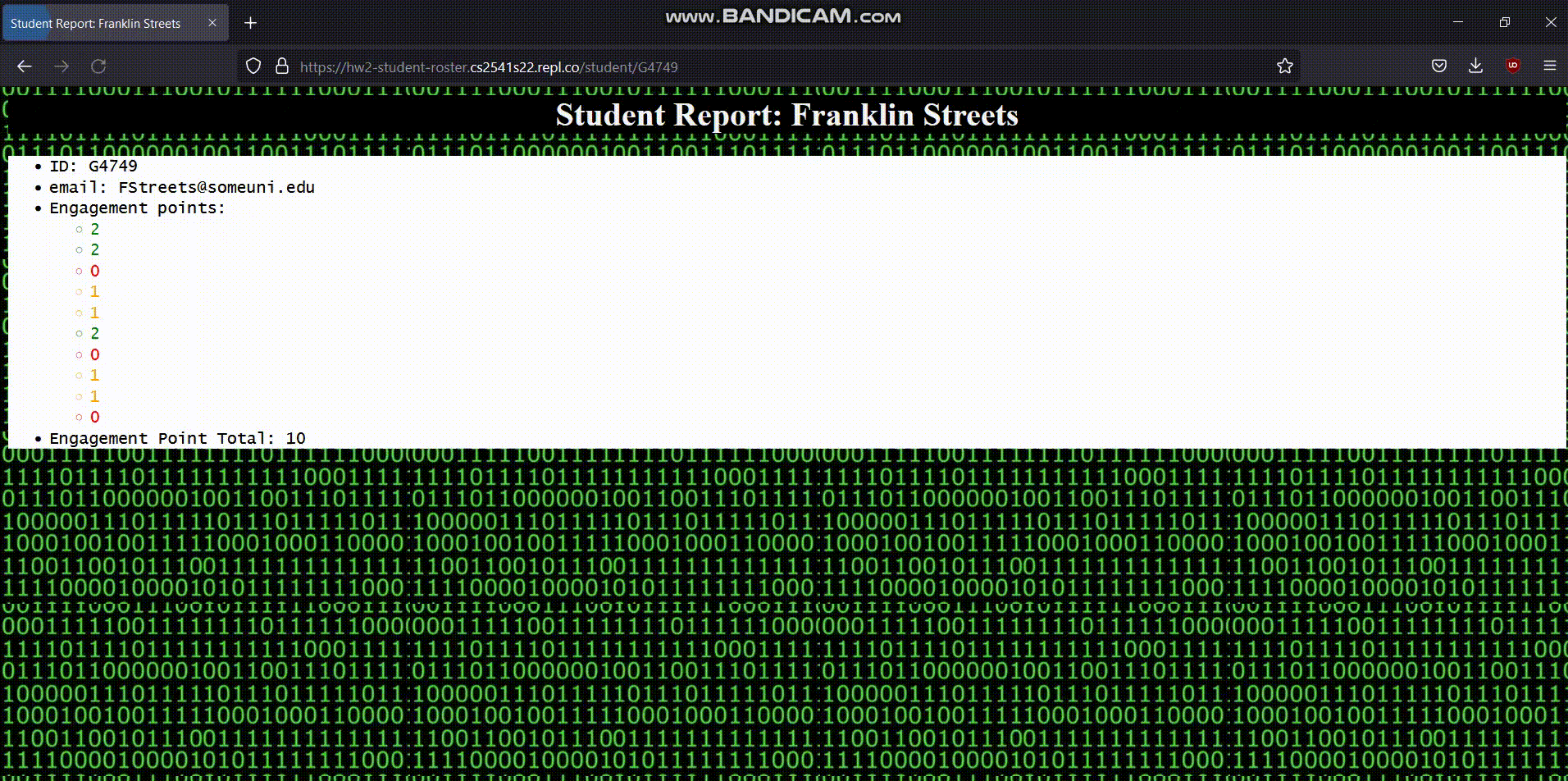HW2: Student Roster
Instructions
Techniques: Python, Flask, Templates, HTML, CSS
For this assignment you must build a student roster application that shows a list of students and gives details about each one. It is similar to Lab 2, but adds some extra features and changes how you get the data.
This is an INDIVIDUAL assignment. You may reuse some of the code from your Lab 2, but you may not work with those students (or any others) to complete the assignment.
Project URL: https://replit.com/team/cs2541s22/HW2-Student-Roster
Deadline: Friday January 28th 11:59PM. Remember to hit Submit!
Hint: The Lab 2 slides and Instructor Playground Replit have a lot of useful information on using Flask templates! You should be using template syntax for
ifstatements,forloops, and access to dictionary values!
Requirements
Your website should contain three types of pages:
- Home page (
/): Should display a list of students in the class by name. Clicking on a student’s name should take them to a student data page - Student Data page: This should display a report about a specific student including:
- Full name
- ID number
- Email address
- Engagement points by week - each student has a list representing how many engagement points they have earned per week over the course of 10 weeks. You should display each entry and color code it as follows: green if they received 2 points, orange for 1 point, or red for 0 points
- Total engagement points - display the total points they have earned over all ten weeks
- Author page (
/author): This page should simply return your full name to help with grading.
Your site must use Python Flask Templates to display the top two types of pages. You must use CSS to change the default styling, and you should use CSS classes to change the color of engagement point entries. Let your creativity guide you.
Accessing Student Data
To get access to the student data, you must use the provided StudentDB class – this will mimic interacting with a database. You may NOT define your own students like you did in Lab 2!
The StudentDB class provides an API to get information about students:
def get_students(self):
"""
Get a List of all students. Each student is stored as a dictionary with keys for id, name, email, and a List of engagement point values.
"""
def get_student(self, id):
"""
Return a dictionary representing a specific student by their ID number
"""
The first function returns a List with all students in the class, while the second will return a specific student based on their ID number. If you aren’t familiar with Python class syntax such as the self keyword, check Full Speed Python’s Chapter 8. Here is sample usage:
from studentDB import StudentDB
# Create a fake DB with 10 students
studentsDB = StudentDB(10)
# get a List of dictionaries representing all students
all_students = studentsDB.get_students()
print(all_students)
# get a dictionary for a specific student (must be a valid ID)
s = studentsDB.get_student("G5545")
print(s["engagement"])
You may only interact with the StudentsDB class by using the two functions defined above. We encourage you to look at the studentDB.py file to see how this is implemented, but you may not modify that file.
Example
Here is an example of what your site might look like when done:
